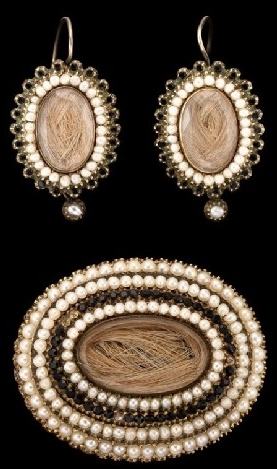Memorial Day may have only been a federal holiday since 1967, but the practice had already been a common one for about 100 years at that point. Tending graves had always been a deeply-respected family tradition for many families, and this began to spread to a community level after the end of the American Civil War. Memorializing the deaths of loved ones though is an age-old tradition, and you’ll find a wide variety of examples of the ways people have done this throughout history.
Some memorials are difficult or even distasteful to us today, like postmortem daguerreotypes. It’s hard for us to imagine today, with folders, both physical and virtual, full of photographs of our loved ones, but at the time, especially with a young child, the only way to keep an image of a loved one might have been to take an image of him or her after death. In some sad instances, you’ll even see daguerreotypes of children clearly on their deathbeds, with parents taking advantage of what might be the final opportunity to capture an image of their living child.
Many people also channeled their grief into making memorials. Throughout the late 18th and 19th centuries (especially during the reign of Queen Victoria, whose mourning of her husband, Prince Albert, took the rituals of grief to a whole new level), we routinely see mourning memorials made in a variety of crafts. You’ll find elaborate needlework embroideries and watercolors of traditional scenes (most commonly one or two women dressed in mourning near a tomb surrounded by weeping willows – the women here have real hair embroidered for theirs) and extraordinarily delicate examples of hair art, often encased in jewelry like the set pictured above. As the 19th century wore on, the desire and demand for mourning ephemera even lead the ubiquitous Currier & Ives to create prints that consumers could purchase, fill in with their loved one’s information and frame, even going so far as to create partially printed Civil War memorials to be filled out with the names of all members in a regiment.
But memorials weren’t just made for members of one’s immediate family. People also created memorials for historical figures, like John Paul Jones and Zebulon Pike; especially with the deaths of Washington and Lincoln, when the entire nation was in mourning, the marketing machine kicked into overdrive, with the names and images of the dead appearing on everything from rings to ribbons, pins to porcelain. Death never takes a holiday, and apparently, neither does the desire to memorialize those who pass on.
-Hollie Davis, Senior Editor, p4A.com





No comments
Comments feed for this article
Trackback link: https://www.prices4antiques.com/blog/antiques-and-death/trackback/